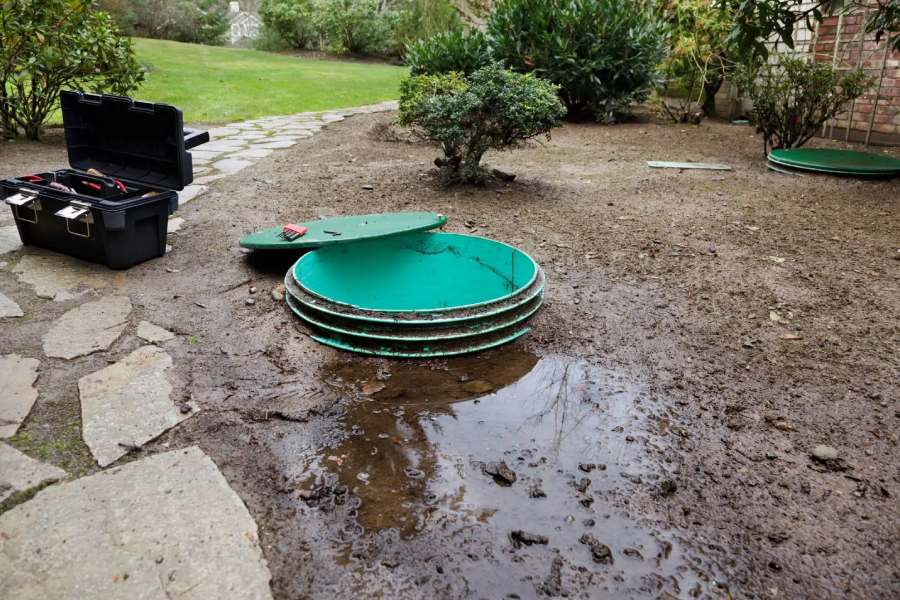Beneath the surface of our homes lies a crucial system that often goes unnoticed until problems arise. The way our houses manage wastewater is a topic that sparks curiosity and sometimes confusion among homeowners, buyers, and even renters.
While we may not give it much thought day-to-day, understanding the infrastructure responsible for handling our household waste is more important than you might think. It impacts everything from property maintenance to environmental responsibility. But does every house have a septic tank?
In this guide, we will explore home wastewater systems, why they’re chosen, and their impact on homeowners and buyers alike. We’ll uncover the factors that influence these differences and shed light on a topic that’s often out of sight but shouldn’t be out of mind.
Join us as we embark on this underground journey, demystifying an essential aspect of modern living that affects us all. By the end, you will have more clarity on the subject of septic tanks.

Does Every House Have a Septic Tank
Not every house has a septic tank. In fact, many homes, particularly in urban areas, rely on public sewer systems for wastewater management. The prevalence of septic tanks varies widely depending on location, local infrastructure, and regulations.
Septic systems are more common in rural and some suburban areas where connecting to a centralized sewer system may not be feasible or cost-effective. However, even in these regions, not all homes utilize septic tanks.
Rural vs. urban areas
In rural areas, septic tanks are far more prevalent due to the lack of centralized sewer infrastructure. The distance between homes and the cost of installing extensive sewer lines make individual septic systems a more practical and affordable solution for rural residents.
Urban and suburban areas, on the other hand, typically have lower rates of septic tank usage. These regions often have well-developed public sewer systems that serve multiple households, eliminating the need for individual septic tanks in most cases.
But do all houses have a septic tank in rural areas? No, septic tanks are common in rural areas, but not universal. They’re often used because rural homes are far from municipal sewer lines. Other options as septic system alternatives include aerobic treatment units, mound systems, or municipal connections where available.
Regional and local regulations
Regulations and zoning ordinances play a significant role in determining whether a house can have a septic tank. Many local governments have specific guidelines regarding the installation and maintenance of septic systems to ensure public health and environmental safety.
Homeowners considering septic systems must comply with various requirements. This includes minimum lot sizes, soil composition tests, and setback distances from water sources. These regulations can sometimes limit the ability to install septic tanks, even in areas where they might otherwise be common.
Public sewer systems
Centralized sewer systems are the primary alternative to septic tanks, especially in urban and densely populated suburban areas. These systems consist of a network of underground pipes that transport wastewater from multiple homes to a central treatment facility.
Public sewer systems offer benefits such as lower maintenance responsibilities for homeowners and the ability to handle larger volumes of wastewater. However, they also have drawbacks, including the potential for system-wide issues and less control over individual household waste management.
Determining If a House Has a Septic Tank
Property inspection and disclosure
Identifying a septic tank on a property often begins with a visual inspection. Look for signs such as a concrete or metal lid in the yard, a slight mound in the lawn, or cleanout pipes protruding from the ground. These indicators can help pinpoint the location of a septic tank.
During real estate transactions, home inspections play a crucial role in determining the presence and condition of a septic system. Sellers are typically required to disclose information about the property’s wastewater management system, including the existence of a septic tank and its maintenance history.
Consulting local authorities
Homeowners can verify the presence of a septic tank by consulting local records. Many county or city offices maintain databases of properties with septic systems, which can be accessed by the public. These resources often provide information on system size, age, and location.
Local health departments or regulatory agencies are valuable sources of information regarding septic systems. These authorities can provide details on permits, inspections, and maintenance requirements for septic tanks in the area. Contacting them can help clarify any uncertainties about a property’s wastewater management system.
Factors Influencing the Use of Septic Tanks
Property size and location
The feasibility of installing a septic tank largely depends on the property’s size and location. Larger lots generally provide more options for septic system placement. In contrast, smaller properties may face challenges in meeting required setbacks from buildings, property lines, and water sources.
Soil conditions and terrain significantly impact septic system functionality. Well-draining soils are ideal for septic tanks, while clay-rich or rocky soils may require alternative designs. Steep slopes or high water tables can also complicate installation and affect system performance.

Economic and environmental considerations
Installing a septic tank involves upfront costs that can be substantial, including system design, permits, and installation. However, ongoing maintenance costs are often lower than monthly sewer fees. Homeowners must also budget for periodic inspections and pump-outs to ensure proper system function.
Septic systems offer environmental benefits by naturally filtering wastewater and recharging local groundwater. However, poorly maintained systems can pose risks to groundwater quality and public health. Proper care and regular maintenance are crucial to maximize the environmental advantages of onsite sewage treatment.
Conclusion
We hope this article has helped you understand the complex factors that determine whether a home utilizes a septic tank or connects to a public sewer system. By exploring the differences between rural and urban areas, as well as regulatory considerations, you can now better assess your own property.
So, does every house have a septic tank? Not all houses have septic tanks. The prevalence of septic systems varies widely depending on location, infrastructure, regulations, and individual property characteristics.
Remember that proper maintenance is crucial for any wastewater management system, whether it’s a septic tank or a connection to a municipal sewer. Understanding these systems is an important aspect of responsible homeownership and environmental stewardship.


